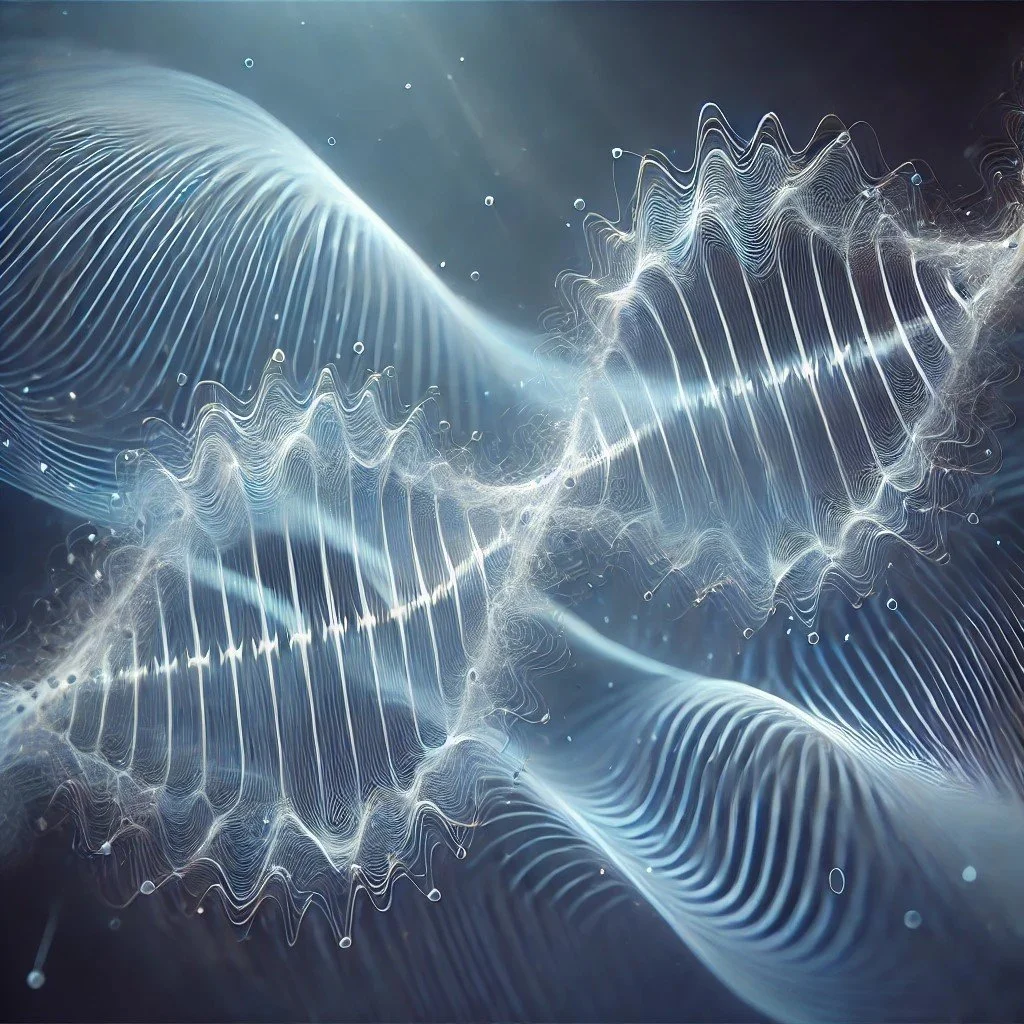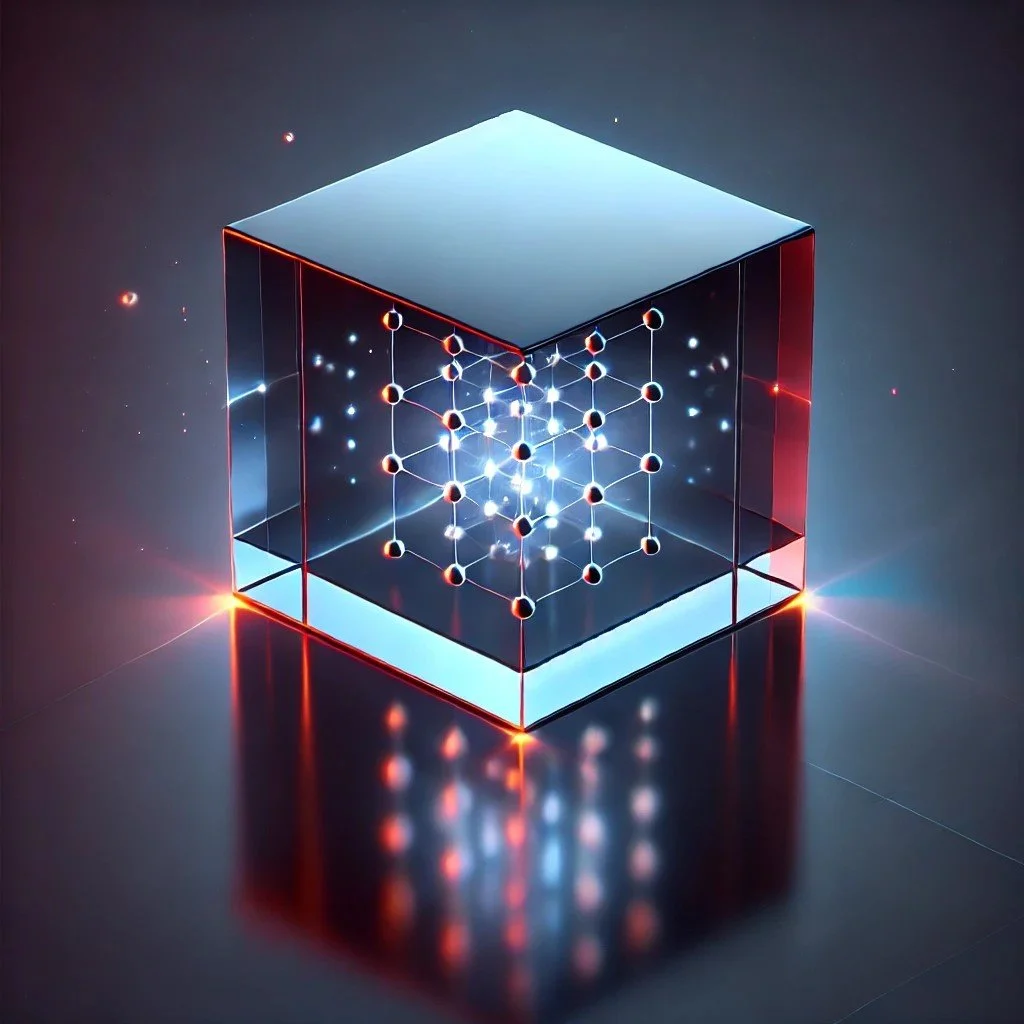From Feedback Loops to AI:
A Historical Perspective on Cybernetics
PROLOGUE
The 1940s' neuro-computational advancements enabled feedback studies, giving rise to cybernetics, defined by Rosenblueth and Wiener as the study of control and communication system analogies between living beings and machines. Wiener envisioned self-correcting machines, while Rosenblueth studied "intention tremor," foreshadowing Cybernetics 3.0's "Levitation of Organizational Resonance (LOR)." Wiener's feedback criteria included input/output poles and a sensor/comparator mechanism. Critically, classical feedback omits the act of choice, essential for correction. A self-driving car drifting out of its lane doesn't just automatically steer back; it must choose how much to steer, considering factors like speed and traffic—this decision-making process is the "act of choice" that classical feedback models often omit.
Cybernetics 3.0 explores how feedback operates differently in living beings and machines, connecting these processes to the concept of LOR that arises from the dynamic interplay between negentropy and entropy. Living beings achieve LOR through complex, assembled feedback mechanisms. Machines, conversely, replicate LOR through graphical interfaces and code. These machine instructions, based on "if-then" logic, replace natural language, prioritizing organized systems over individual expression. Consider a self-lubricating machine. Cybernetics 3.0 views this machine as an "artificial Ego" because it performs actions. First, it "identifies" its current oil level and compares it to the ideal level (a "parallel act" of assessment). Then, it makes a "decision" – an "intelligentization" or causative act – about whether to add oil. Finally, the act of adding oil itself represents a "derailment" of the system's normal state (LOR derailment). This sequence mirrors aspects of human action within the Cybernetics 3.0 framework.
Second-order cybernetics, introduced by von Foerster, shifted from "observed systems" to "observing systems," emphasizing the observer's role. While first-order systems resemble self-contained Egos, second-order systems incorporate a self-aware Ego. Maturana and Varela's "autopoiesis" describes this observer-observed fusion, but Cybernetics 3.0 argues it leads to self-referential dialogue, limiting external communication. This is where Cybernetics 3.0 diverges. While it acknowledges the observer's role, it argues that autopoiesis, by focusing on the fusion of observer and observed, creates a closed loop. The system becomes so focused on itself (the "self-referential dialogue") that it struggles to genuinely interact with or communicate with the external world, with the "Other." It's like a conversation where someone is so focused on their own thoughts and feelings that they can't really listen to or understand anyone else. The interaction becomes a reflection of the self, not a true exchange. Cybernetics 3.0 seeks a different approach that balances self-awareness with genuine engagement with the "Other."
Cybernetics 3.0, developed by our team, rejects the observed/observing dichotomy, focusing on "human act systems." Machines are extensions of human action, lacking autonomy. Life is tied to human experience. Feedback becomes the "feedback of doing," mediated by an Alter-ego. Imagine a teacher (Ego) trying to teach a student (Alter-ego) a new concept. The teacher doesn't just deliver information (output). The feedback is the student's reactions (questions, confusion, understanding). But it's not just information; it's the student's active engagement with the material that shapes the teacher's understanding of how to teach better. The student (Alter-ego) isn't just a receiver; they're an active participant in the learning process, influencing the teacher's actions. This is a key difference from Maturana and Varela's autopoiesis. Autopoiesis emphasizes self-reference, the system interacting with itself. The "feedback of doing," mediated by an Alter-ego, emphasizes interaction with the Other. It's about going beyond self-reflection and engaging in genuine dialogue and exchange with the external world.
Second-generation cyberneticists viewed life as autopoietic replications. Cybernetics 3.0 sees the universe as acts with varying degrees of freedom. "Vital acts" have greater freedom than "inert acts." "N-freeness" measures a sequence's insensitivity to n predecessor acts, underlying life's complexity.
Our 2008-2021 research, documented in The Informational Foundation of the Human Act and Whispers and Shouts, explored these concepts. With Carmen Flores Bjurström's 2019 addition, we integrated quantum superposition, leading to LOR (organizational superposition) and derailment (decoherence). N-free series express LOR. Complexity is the superposition of resonating alternatives. LOR arises from organizational resonance between negentropy and entropy. Further details can be found in the following books authored by Fernando Flores Morador: El Hacedor y el Tiempo. Cibernética 3.0. Volumen I: Polarizaciones (2021) and El Hacedor y el Tiempo. Volumen II: Levitaciones (2022).
Written by Fernando Flores Morador and Luis de Marcos Ortega, with editorial contributions by Carmen Flores Bjurström.
For further information, please visit https://sites.google.com/view/act-measurement/
Bibliography
Flores Morador, F. (2021). El Hacedor y el Tiempo. Cibernetica 3.0. Volumen I: Polarizaciones. Computer Science Department, Universidad de Alcalá, Spain
Flores Morador, F. (2022). El Hacedor y el Tiempo. Volumen II: Levitaciones. Computer Science Department, Universidad de Alcalá, Spain
Flores Morador, F., de Marcos Ortega, L., & Flores Bjurström, C. (2021). Hermeneutics of measurement. Computer Science Department, Universidad de Alcalá, Spain. SSRN.
Flores Morador, F., de Marcos Ortega, L. (2018). The informational foundation of the act. Computer Science Department, Universidad de Alcalá, Spain. SSRN.
Flores Morador, F., de Marcos Ortega, L. (2020). Whispers and shouts; The informational measurement of the human act. Computer Science Department, Universidad de Alcalá, Spain.
Flores Morador, F., de Marcos Ortega, L., & Flores Bjurström, C. (2019). Quantum computation in a human environment. Computer Science Department, Universidad de Alcalá, Spain. SSRN.
Foerster, H.v., Mead, M., & Teuber, H.L. (1951) Transactions of the eighth conference on cybernetics. Josiah Macy, Jr. Foundation, New York.
Foerster, H.v. (1991). Semillas de la cibernética, p.20. Barcelona: Gedisa Editorial.
Maturana, H., & Varela. (2009). El árbol del conocimiento: Las bases biológicas del entendimiento humano. Santiago de Chile.
Maturana, H., & Varela. (1987). The tree of knowledge: The biological roots of human understanding. Boston.
Rosenblueth, A., Wiener, N., & Bigelow, J. (1943). Behavior, purpose, and teleology. Philosophy of Science, 10(1), 18-24.
Shannon, C.E., & Weaver, W. (1964). The mathematical theory of communication. The University of Illinois Press, Illinois.
Varela F. J. (1992) Autopoiesis and a biology of intentionality. In: McMullin B. (ed.) Proceedings of the workshop “Autopoiesis and Perception”. Dublin City University, Dublin: 4–14.
Foerster, H.v., Mead, M., & Teuber, H.L. (1952) Transactions of the ninth conference on cybernetics. Josiah Macy, Jr. Foundation, New York.
Wiener, N. (1948, 2nd revised ed. 1950). The human use of human beings. The Riverside Press (Houghton Mifflin Co.), Mass.
Wiener, N. (1948, 2nd revised ed. 1961). Cybernetics: Or control and communication in the animal and the machine. Hermann & Cie & Camb. Mass (MIT Press). ISBN 978-0-262-73009-9.
Wiener, N. (1964). God & Golem. Inc.: A comment on certain points where cybernetics impinges on religion. MIT Press, Mass.









